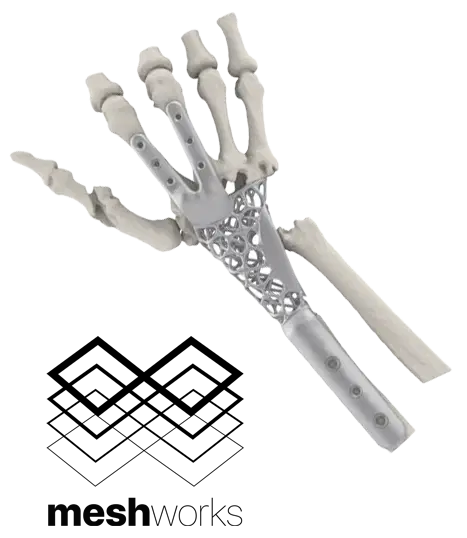In the ever-evolving landscape of surgical innovation, 3D printing technology has emerged as a transformative force, offering unprecedented opportunities for personalised patient care. Among the forefront advancements, Patient-Specific Implants (PSI) stand out as a game-changer, revolutionising the way surgeons approach complex procedures. In this comprehensive guide, we delve into the myriad benefits of PSI, from cost-saving potential to unparalleled customisation, and explore how embracing this cutting-edge technology is essential for staying ahead in the future of surgery.
The Promise of Patient-Specific Implants: A Paradigm Shift in Surgical Precision
Patient-Specific Implants (PSI) represent a paradigm shift in surgical precision, offering bespoke solutions tailored to each patient’s unique anatomy and pathology. By harnessing the power of 3D printing technology, surgeons can design and fabricate implants with unparalleled accuracy and customisation, minimising intraoperative complications and optimising patient outcomes.
Cost Savings and Scalability: Maximising Efficiency in Surgical Practice
One of the most significant advantages of PSI lies in its potential for cost savings and scalability. Unlike traditional implant manufacturing processes, which often rely on mass production and standardised sizing, 3D printing allows for on-demand fabrication of custom implants, eliminating the need for costly inventory management and reducing waste. Additionally, the scalability of 3D printing technology enables rapid production of implants, ensuring timely access to personalised solutions for patients worldwide.
Real-World Case Studies: Demonstrating the Efficacy of PSI
To illustrate the tangible benefits of PSI, let’s explore some real-world case studies:
Case Study 1: Orthopaedic Surgery
In a complex orthopaedic reconstruction procedure, a surgeon utilises PSI to address a challenging bone defect. By collaborating closely with engineers and leveraging 3D printing technology, the surgeon designs and implants a customised prosthesis that precisely matches the patient’s anatomy. The patient experiences improved functionality and reduced risk of implant-related complications, highlighting the transformative impact of PSI in orthopaedic surgery.
Case Study 2: Craniofacial Reconstruction
In a craniofacial reconstruction surgery, a patient presents with a complex skull defect following trauma. Through advanced imaging techniques and 3D printing technology, the surgical team fabricates a patient-specific cranial implant that seamlessly integrates with the surrounding anatomy. The patient achieves cosmetically pleasing results and restored cranial integrity, showcasing the versatility of PSI in craniofacial surgery.
Challenges and Solutions: Navigating the Implementation Process
While the benefits of PSI are undeniable, embracing this innovative approach may present challenges for surgeons. Common hurdles include:
- Regulatory considerations: The implementation of PSI may be subject to regulatory requirements and quality assurance standards. Surgeons must ensure compliance with relevant regulations and collaborate closely with regulatory authorities to navigate the approval process for PSI.
- Interdisciplinary collaboration: Effective integration of PSI into surgical practice requires interdisciplinary collaboration between surgeons, engineers, and other healthcare professionals. Establishing clear communication channels and fostering a culture of teamwork are essential for seamless workflow integration.
Conclusion: Embrace the Future of Surgery with PSI
In conclusion, Patient-Specific Implants (PSI) represent a transformative leap forward in surgical innovation, offering surgeons a pathway to enhanced precision, efficiency, and patient care. By embracing 3D printing technology and personalised implant solutions, surgeons can revolutionise the way they approach complex procedures, positioning themselves at the forefront of surgical excellence. While the implementation process may pose challenges, the rewards are immeasurable, paving the way for a future where every patient receives tailored solutions that maximise outcomes and improve quality of life. Now is the time for surgeons to lean into PSI and shape the future of surgical practice for generations to come.

